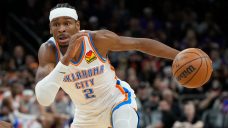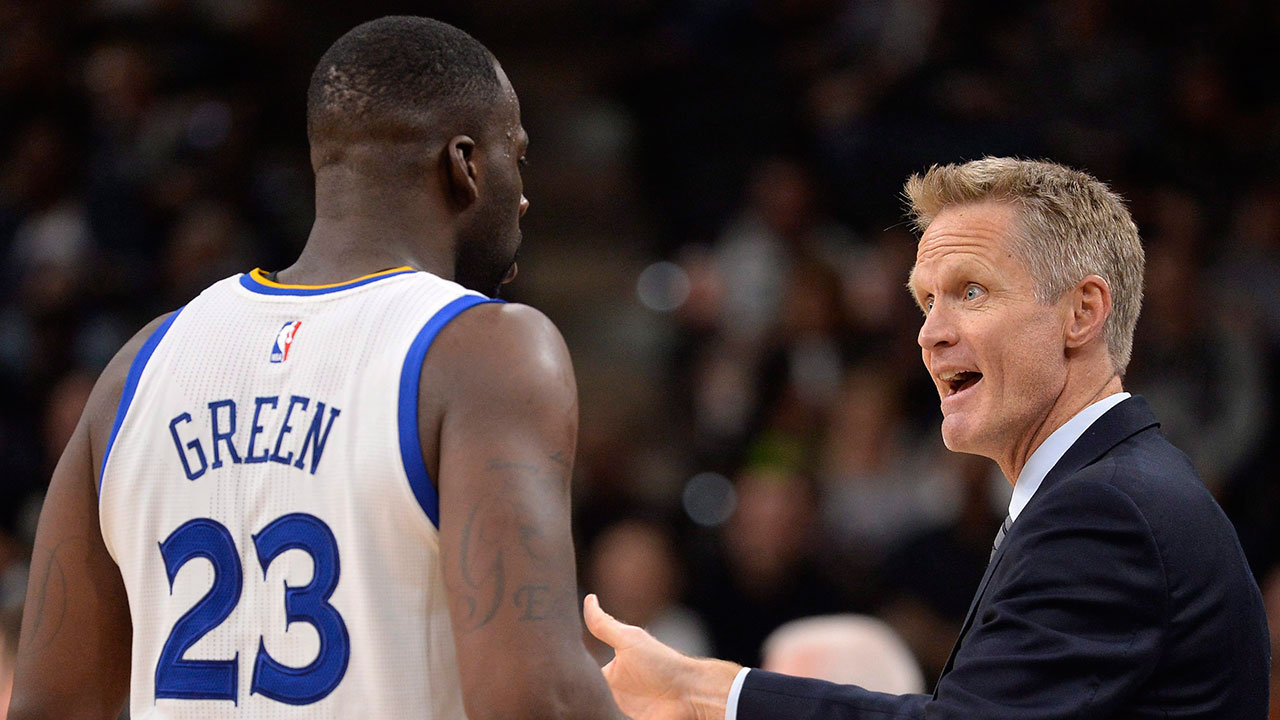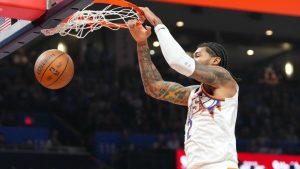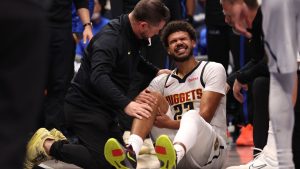The NBA is a star-driven league, and not by accident.
So much of the league’s current standing — of which its pending multibillion-dollar new media rights deal is one example, and that we’re in an era where top players will soon be earning $60 million per season being another — is based on the league’s determination to market itself through its biggest names, and because over the years so many of those players have been worthy of the hype.
As the second round of the NBA playoffs tip off Saturday night, there is plenty of evidence that even as the old guard begins to recede ever-so-slightly into the background — this will be the first time since 2005 that at least one of LeBron James, Kevin Durant or Steph Curry won’t be in the conference semifinals — a new generation of stars is emerging.
The match-up between Denver and Minnesota — the second and third seeds in the Western Conference — is a perfect example. As Nuggets big man Nikola Jokic tries to lead Denver to its second-consecutive championship, he very conceivably could end up being a three-time league MVP and two-time Finals MVP by late June, adding himself to a short list including James, Michael Jordan, Magic Johnson, Larry Bird, and Kareem Abdul-Jabbar as players with at least two Finals MVPs and three regular-season MVPs on their resume. At 29, there’s no reason Jokic won’t be able to build further on an all-time resume in what should be a lengthy prime of his career.
Meanwhile, the Timberwolves are led by 22-year-old Anthony Edwards, arguable the league’s most compelling human highlight film since Vince Carter was patrolling the skies in the early 2000s. Edwards showed that he wasn’t content to simply take the torch from Durant in Minnesota’s first-round sweep of Durant’s Suns. Instead, he snatched from his idol, punctuating the Timberwolves' win with a series-clinching highlight-reel dunk in the closing seconds to ice Game 4 and plenty of trash-talking to drive home the point.
With NBA royalty sidelined, the second round features a proliferation of stars in ascendance. As the youngest team to ever win a playoffs series, Oklahoma City and Shai Gilgeous-Alexander should be in the spotlight for years to come. If Dallas can close out the Los Angeles Clippers — another team relying on fading, old-guard stars — it will the first of what could be several epic post-season showdowns between the Mavericks' Luka Doncic and Gilgeous-Alexander, who will likely finish 1-2 in the MVP voting this season.
In the Eastern Conference, the New York Knicks, led by emerging superstar Jalen Brunson, are heavy favourites to brush past the Indiana Pacers, which should set up a conference finals showdown with the Boston Celtics, providing their in-their-prime duo of Jayson Tatum and Jaylen Brown can get by either Cleveland or Orlando in the second round.
All of which illustrates a greater point: even as the likes of James, Curry and Durant cede the post-season spotlight for the first time in two decades, the NBA remains in a very good place.
In that sense, it reflects the perfection of a league-changing marketing strategy that the late David Stern put into place when he took over as commissioner in 1984 and made a point of putting the league’s best players front and centre. Even 40 years ago, Stern understood what has always fueled entertainment properties: stars and stories.
The epic trio of Lakers and Celtics NBA finals that anchored the 1980s and helped fuel the rocket ship trajectory the league has enjoyed since were billed not only as meetings between the league’s most iconic franchises, but as a showdown between Boston’s Larry Bird and Los Angeles’ Magic Johnson. Stern was behind the founding of NBA Entertainment, the league’s in-house production team, which created content around its stars, saw the benefit of NBA stars playing at the Olympics and inherently understood the value of having the league’s best athletes dominating late-night sportscasts with their unbelievably athletic feats.
And then Jordan came along and served as the perfect catalyst, combining legendary athleticism, a ruthless determination to dominate on the brightest stages and a businessman’s savvy for how to market himself. The league’s fortunes climbed higher again.
The only problem was that athletes aren’t immortal. Stern and the NBA were so busy riding the Magic-Bird-Jordan wave that there was no effective bridge strategy when those players finally faltered. It is no coincidence that when Jordan retired after winning his sixth and final title with the Chicago Bulls, in 1998, the NBA’s fortunes sagged. The most-watched NBA game in history was Game 6 of the 1998 Finals, as 35.9 million U.S. viewers tuned in to watch Jordan hit his iconic game-winner over Byron Russell.
Five years later, the passion for NBA basketball had fizzled like a week-old birthday balloon. Even a short-lived Jordan comeback with the Washington Wizards wasn’t the tonic the league needed. In 2003, Tim Duncan — coming off his second consecutive MVP award and ultimately one of the greatest players in league history — led the Spurs to their second championship of the post-Jordan era, pushing past the New Jersey Nets, led by Hall of Famer-to-be Jason Kidd, arguably the NBA’ s best point guard not nicknamed Magic.
The Spurs and Nets and Duncan and Kidd were worthy adversaries, but no one outside hardcore fans seemed to care too much. No Jordan? No interest.
The Spurs' series-deciding win in Game 6 drew just 11.6 million viewers and was the most poorly watched Finals since Stern became commissioner.
There were other issues, among them that the brand of basketball being played was a turgid, defence-first rock fight — the Spurs sealed their title with an 88-77 victory in which the two teams combined to shoot 39.8 per cent from the floor and 25 per cent from three.
But it was also missing the kind of star power that had defined the league for nearly 20 years — from Magic to Bird to MJ, with plenty of supporting stars in their wake.
The 2003 draft fixed that. James came into the league as one of the biggest stars in all of sports, and remains one 21 years later. Kings James was just the first of three massive stars who came into the NBA in short order and whose excellence helped keep the league awash in storylines, highlights and moments that will live on in league lore. Durant was drafted in 2007 and Curry in 2009. Throw in Kobe Bryant, whose late prime overlapped with James’ early rise, the lift provided by Steve Nash’s Phoenix Suns and the way their hectic playing style dragged the league into the future, along with Hall of Famers Chris Paul (drafted in 2005) and James Harden (also drafted in 2009), and the post-Jordan stardom void was filled by committee, even if James, Curry and Durant were on the executive committee.
The league is again in a tremendous position as it hopes to triple its current media-rights deal, worth $2.7 billion annually, which itself was three times what the league earned on the deal that expired in 2014.
Whether it reaches that loft goal or not, it’s evident that the league remains a valuable property and the money flowing into it will be a rising tide ready to lift all boats. It’s possible that one of the young stars in the league now — Edwards or Victor Wembanyama or Gilgeous-Alexander or Doncic — could end up earning $100 million per season in the not-so-distant future.
Even as James and his generational co-stars get pushed to the edge of the stage, there is a crowded field of stars — both readymade and emerging — already in the wings, looking for their moment to shine.






 4:09
4:09